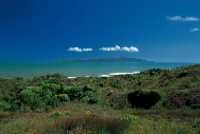60th Jubilee of Queen Elizabeth Park

E kui mā, e koro mā, e tamariki mā, e huihui nei, tēnei aku mihi māhana ki a koutou. Kia ora tātou katoa. Distinguished guests, ladies, gentlemen and children warm greetings to you all.
E ngā manu tioriori karanga, e ngā Rangatira wahapū korero, karanga mai, mihi mai. Te Atiawa o Whakarongotai iwi; Ngāti Toa Rangatira iwi; Nga Hapu o Otaki iwi nga mihi ki a koutou. Mihi mai i runga i ngā mate, kua moe i te moenga roa, kua okioki. Ka mate he tētē, ka tupu he tētē.
To the ladies who beckoned us and the chiefly speakers I acknowledge your words of welcome. I also acknowledge those who have passed away and who now sleep the long sleep: As one frond dies another grows in its place.
I also acknowledge: Hon Fran Wilde, Chair of the Greater Wellington Regional Council; Your Worship, Jenny Rowan, Mayor of Kāpiti; John Lancashire, from Friends of Queen Elizabeth Park; and students, parents and teachers from Paekakariki, Raumati South and Te Ra schools - tēnā koutou katoa.
Thank you for inviting me and Janine here today to plant trees in celebration of Arbor Day and the 60th Jubilee of Queen Elizabeth II Park. Thank you also to the Paekakariki Kapa haka group for your part in the powhiri. It is good to see so many primary school students here today.
Arbor Day is a day for planting trees, a well-established tradition in New Zealand. In New Zealand, children have had a major role in Arbor Day since the 1930s – that’s 80 years! The first Arbor Day in New Zealand was held in 1890 in Greytown – and I am told some of the big trees in that town were planted on that day - 123 years ago. The very first Arbor Day ever was held in America in the state of Nebraska in 1872 – and about one million trees were planted across Nebraska on that day.
Planting trees is a very satisfying task. For many thousands of years people have delighted in putting little seedlings in the ground knowing that with care, some water and some sunlight they will grow into trees. We appreciate trees partly because they are attractive and because we need them; they turn carbon dioxide into oxygen for us to breathe. The 32nd American President, Franklin Delano Roosevelt, once put it that: “Forests are the lungs of our land, purifying the air and giving fresh strength to our people.”
I am very pleased to be here to plant trees in Queen Elizabeth II Park this year as a way of marking the 60th anniversary of when Queen Elizabeth II was crowned as our Queen in a ceremony full of pomp and tradition. I’m also pleased to be here because in 1953 this Park was opened and named for her when she visited New Zealand.
Although the Queen visited New Zealand at the end of 1953, she did not visit this park. She has returned many times since, over the past 60-years, and has taken a special interest in the children of New Zealand.
When she left after a visit in 1963, the Queen sent what she called “a farewell message to the school children of New Zealand”. I want to pass on to you children what the Queen said in her message – because I think it is as true for you today as it was for the children who received it 50 years ago. She wrote:
“Soon it will be your turn to shoulder the full responsibilities of citizenship and the progressive development of your native land. Yours will be a wonderful inheritance; a beautiful country with a rich and varied nature to preserved and enjoyed; fertile farm lands and thriving industries; modern and prosperous towns and cities and, above all, a free and democratic system of Government. All this can be destroyed by indifference or neglect, or it can be improved and developed by your careful attention, by your plans and by your work.”
By planting trees here today we are helping to make sure we keep our wonderful country beautiful. It also shows our willingness to consider the environment and to keep improving and developing it so that it can be enjoyed by future generations of New Zealanders. Kia ora tatou katoa.
